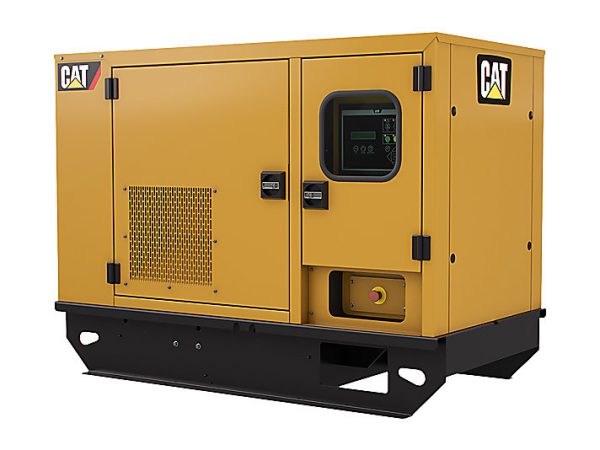- cross-posted to:
- upliftingnews@lemmy.world
- cross-posted to:
- upliftingnews@lemmy.world
cross-posted from: https://lemmy.world/post/34272214
A California-based biotechnology startup has officially launched the world’s first commercially available butter made entirely from carbon dioxide, hydrogen, and oxygen, eliminating the need for traditional agriculture or animal farming. Savor, backed by Microsoft co-founder Bill Gates through his Breakthrough Energy Ventures fund, announced the commercial release of its animal- and plant-free butter after three years of development.
The revolutionary product uses a proprietary thermochemical process that transforms carbon dioxide captured from the air, hydrogen from water, and methane into fat molecules chemically identical to those found in dairy butter. According to the company, the process creates fatty acids by heating these gases under controlled temperature and pressure conditions, then combining them with glycerol to form triglycerides.
While I think this is pretty amazing science stuff, the writing is terrible. Here is the progression of the story as written:
They made butter from carbon…
Well, it’s actually made from carbon dioxide, hydrogen, and oxygen…
OK, it’s actually made from carbon dioxide, hydrogen, oxygen, and methane…
Well, no, it’s actually made from carbon dioxide, hydrogen, oxygen, methane, and glycerol…
Wait, hang on, it’s actually made from carbon dioxide, hydrogen, oxygen, methane, glycerol, natural flavor, and lecithin…
Now, the source of glycerol is in question, because they say this butter is both animal and plant-free. Glycerol can be made synthetically, but it’s WAY more expensive to do it. Also, I’m not seeing any way to create lecithin without plants. They never say what the “natural flavor” is.
They never say what the “natural flavor” is.
A reminder that “natural flavor” doesn’t mean healthier or even something you might want over the artificially created flavors. It just means it comes from a natural source and is not lab created.
Castoreum, sometimes used for vanilla and raspberry flavoring, comes from beaver anal secretions. That would be labelled under a “natural flavor” and you’d never be told more than that.
I’ll take the artificial stuff any day just on principle there.

It would have cost you nothing to not write this.
Maybe he wouldn’t have lost anything, but I wouldn’t have been able to enjoy his comment.
I think it’s worth pointing out that vanilla extract is from vanilla beans and artificial vanilla is whatever the fuck they feel like that tastes like vanilla. Also, modern artificial vanilla extremely rarely, if ever, is derived from Castoreum because it’s hard as hell to farm beavers and expensive as all fuck. The “artificial vanilla comes from beaver anal glands” is basically a prevalent internet myth that gets passed around like the, “You eat 7 spiders a year in your sleep.” myth.
Incorrect, vanillin is the primary component of real vanilla beans and responsible for like 90% of the flavor.
I don’t understand what this would be correcting in what I said above. Can you show me what part this is correcting? Cause I’m legitimately confused.
You said artificial vanilla is whatever the fuck. It’s not, artificial vanilla is the main ingredient of natural vanilla, but without the other flavors
Ah gotcha! I for sure was not following what you were saying. I don’t know if that’s he real thrust of the point in my above comment, but I was more referring to the fact that artificial vanilla doesn’t necessarily come from vanilla beans. I should’ve been more precise with my language, but it’s worth noting that artificial vanilla is largely synthesized and comes from a variety of sources, not just vanilla beans (see below for the source/pertinent excerpt).
It also gets weird as to how the FDA regulates the term. I believe the key term is actually “Pure” in the “Pure Vanilla Extract” but don’t quote me on that. Not sure how it’s done by other regulatory agencies but it’s probably equally convoluted in a lot of places.
Pertinent excerpt:
However, many alternate routes to vanillin are well documented, including vanillin derived from spruce tree lignin, corn sugar, rice or wheat bran, clove oil, curcumin, or guaiacol.
Yes, that’s true, but the vanillin in the artificial stuff is chemically identical to the real thing
Also, poop has natural flavour. Natural flavour also doesn’t mean it tastes good.
Spoken like someone who’s never ate shit.
You’re not going to catch me out with this one again!
Billions of flies can’t be wrong!!
Get your Synthetic poop flavour here!
Mmmm, I like licking beaver butt. 😉
Myth. Vanilla extracts either come from low grade vanilla pods or cloves. It may have been but not today.
Fuck man I had no idea, I’ve missed out on my prime years of eating beaver anal secretions 😭
They can still be your prime years in terms of quantity of beaver ass eaten, if not in quality. But I think you sell yourself short. They’re gonna love you!
My ex wife’s uncle was the director of the south American division of the arm that made coloring and flavorings of one of the big Food/Chem groups, Procter & Gamble, or unilever, or one of those. Can’t remember.
No one in his household ate any processed/ultra processed foods.
Do the math.
They never say what the “natural flavor” is
…it’s people?
Where do you think Trump is sending all the homeless? A big old wooden screw press…
There’s something unpleasantly psychopathic in emotion about BtVS, but this one moment was funny.
I was thinking Soylent Green, but if Buffy provided a reference point for Charlton Heston, all the better.
They add just a little butter for that real butter flavor
It kind of sounds like the beginnings of star trek’s replicators…
But that aside, somehow I doubt those are the exact only “ingredients” they use.
And it wouldn’t surprise me at all if the end product contains all kinds of trace elements of various not so healthy chemicals used to get the parts to combine into the actual butter.
Like the process to get the glycerol or lecithin in a state they can use.Ofcourse a lot of our dietary ingredients are contaminated in various levels anyway.
It makes me think of Enterprise, where they don’t have replicators but they do have protein resequencers, which can take waste matter and convert it into useful things, but they can’t do energy to matter conversion yet.
All butter is made from CO2 it simply goes through a processing step known as cow.
You missed the grass or corn step.
Thank goodness we have the assurances of a billionaire oligarch to help steer humanity in the right dietary direction.
Global warming and ecological crises make shifting diets away from animal products a pretty good idea.
Whether it’s antibiotics resistance, deforestation, or greenhouse gas emissions, humanity is paying a very high price for animal agriculture at the current scale.
Problems come up: “BILLIONAIRES SHOULD DO MORE!” Billionaires do more: “WE CANT TRUST BILLIONAIRES!!”
The conclusion ought to be that billionaires shouldn’t exist. Even if they donate most of their wealth, they will still donate in ways that aren’t necessarily solving real problems.
On that we agree
Ruminants creating greenhouse gasses is a problem that can solve itself by returning to huge fucking pastures and cooperative farming.
Instead, we’re getting synthetic food. We’re a decade removed from human grade kibble at this point.
Here again, capitalism is the problem. A capitalist offering capitalism solutions to problems created by capitalism isn’t appealing.
So, like every other butter and oil, that’s why we call them hydrocarbon.
I imagine this “butter” doesn’t contain any glycomacropeptide, α-lactalbumin, β-lactoglobulin, serum albumin and immunoglobulins
You’re probably right, but I can’t wait to see the egg on your face if it does turn out to contain glycomacropeptides, α-lactalbumin, β-lactoglobulin, serum albumin and immunoglobulins!
Hey but it’ll make bill gates a buck!
To put it in simple terms, Savor says they take carbon dioxide from the air and hydrogen from water, heat them up, oxidize them and get a final result that looks like candle wax but is in fact fat molecules like those in beef, cheese or vegetable oils.
So their process sounds like it creates synthetic lard, not butter. This can still be a good thing as the extra ingredients to make it “butter” aren’t really the hard/impactful part of butter.
No, the fat they create is butter fat
I don’t eat carbon-based foods. Exotic silicon lifeforms, fresh from Titan’s methane seas.
How do you know when someone is a non-carbon eater? Don’t worry they will tell you.
Oh look; AI has gotten so advanced that computers now have haut-quisine.

Good ol’ Gates, always around to make a quick buck of the bloodied backs of humanity. Never an advancement meant to aid us all he can’t swoop in to parasitize. That’s right Billy boy, I didn’t forget the COVID vaccine patents. Billionaires must be condemned to the rubbish bin of history.
Were just all their rentboys.
I’d actually be willing to give it a try if it’s vaguely price-competitive, but their website is all glam shots of butter and people doing things with butter and not only doesn’t sell it but doesn’t tell you where you can get it.
Also, they did not do a good job of choosing that name. It looks like there’s a very-similarly-named French Canadian manufacturer of butter, Savör, which apparently isn’t too religious about using their umlaut:
At Savor, we believe the best butter starts with the best environment. That’s why we source our grass-fed dairy butter from New Zealand, a country renowned for its pristine landscapes, sustainable farming, and exceptional dairy quality.
I foresee a collision between those two.
Pretty sure I know the factory that this butter comes from. The Miraka plant; north of Taupō. Geothermally powered, restricts it to a relatively small region in NZ.
Maybe the manufacturer is in New Zealand and the French-Canadian people are the guys who package and sell it or something. Dunno, just did a quick skim of their site.
I doubt it, I think the Miraka plant is produces mostly primary products not the secondary stuff.
Yeah well… I never liked Savör products too much. They go out if their way with all their branding and claims, but you can get very tasty butter from local creameries at similar prices, without the need to ship it frozen halfway across the globe. Especially with milk sourced from the eastern townships or the Saguenay region. And Quebec (where Savör is operating) runs on 100% hydro power, which is equal or better to geothermal. So whatever Savör is gaining from the Miraka plant, is lost on the need to import basically.
I get that, why import stuff that you produce locally…
I try to never get imported food products that we make here… It just seems wasteful.
If butter increases in price, but Savor keeps it low, consumers will buy it to maintain healthy finances.
This is interesting…
Lab grown meat have problem where they cannot create fat. So if this works, maybe this is the solution.
“So you’re using this gas right now to cook your food and we’re proposing that we would like to first make your food with— with that gas,” said Kathleen Alexander, co-founder and CEO of Savor.
That doesn’t sound appetizing… Lol.
I would like to propose you eat my gas
“Eat my gas” should be their slogan.
Sounds like more of an actual air fryer. Maybe they can cook stuff in fatty gas rather than dropping it in oil.
I’m not giving up a small pleasure like butter just so that a billionaire can buy another private jet and wipe out whatever tiny carbon footprint savings comes from giving up butter
I too love participating in the simple pleasure of systemic animal abuse just to spite the billionaires
The cows yearn to be milked.
Is femboy milk butter ok?
Higher protein content than the cow milk variant!
Doesn’t work well in a cake, sadly.
Not w/ that attitude.
How to spot a vegan: They’ll make sure to turn every discussion to a vegan direction with little effort.
We’re literally talking about an alternative to an animal-based food product.
Nice try, VEGAN, but we’re not going to be deluded into accepting an ethical and cost-efficient alternative to a popular but unsustainable food ingredient.
You’ve filled this community with your malicious campaign of compassion towards living creatures and economic sensibility for FAR TOO LONG. Why don’t you take your EXTREMIST VIEWS on practical efficiency, carbon emissions reduction, ecological sustainability, and better treatment of sentient life and HIT THE BRICK, MATE!
Your conscience, your logic, and your morale character might be welcome in VEGANLAND, but around here we’re built different.
Lordy, this comment is so beautifully wet with sarcasm. Thank you for your creativity and the laughs! You’re awesome!
Yet the other user is being scolded for a choice instead of actually contributing to the conversation. Maybe the user was indeed vegetarian and had dietary problems making butter a good source for protein.
Don’t judge other people’s diets. That’s just an ill-faithed attempt at winning them over to your side without having to show any concern for their life. Instead contribute to a conversation, ask and ye shall receive.
The diet isn’t the issue here. The OP was saying they prefer animal-produced butter to this because… billionaires? Do they think billionaires don’t profit from the dairy industry?
The comment makes no sense. This artificially-created butter would have equivalent nutritional content to biologically-created butter, and there’s a decent chance it can mimic the flavor as well. So it absolutely makes sense to point out the silliness of the opposition, which seems to be based on Gates’ involvement, when Bill Gates isn’t really in business anymore, but more into philanthropy, so buying this is unlikely to enrich Gates by any meaningful amount.
How to spot an asshole: things can only be about what I want them to be about.
You want them to have a slightly smaller mansion on Nantucket island?
How much carbon is emitted to run the factory to make it though? Are we talking a net negative here?
You mean how much butter is emitted
Some, as prepping the carbon and hydrogen will take energy. But it wouldn’t be hard to be way better than the emissions associated with dairy farming for butter. Cost could still be higher, though depending on how much material is needed for the process.
I wonder where they source the methane from. Because I pictured a comicbook flip book of a balloon blowing up behind a cow
Methane is just the primary compound in natural gas.
I mean they can get it from the ground, but it can also come from things kind of fermenting in cows/our stomachs.
Methane is easy to produce. Basically, anything that rots produces methane.
They didn’t go into details, and I never took chemistry, but they may not even need methane. From my very basic understanding of chemical chains, triglycerides are made from carbon, hydrogen, and oxygen, and methane is hydrogen and carbon. So you could theoretically convert methane to triglycerides by combining w/ oxygen, but you could also do the same by extracting carbon and oxygen from CO2 and oxygen and hydrogen from water.
Fertilizers are typically generated from natural gas (methane), but green ammonia exists and is produced from air and water and can replace the fossil fuels in fertilizer production. The same could absolutely make sense here.
“Savor says they take carbon dioxide from the air and hydrogen from water”
I’m no expert but direct air capture of Co2 and water electrolysis both use a lot of power. So using them for this purpose is likely just a marketing gimmick that doesn’t make any sense either economically or for the climate.
That depends entirely on the method used to generate the power. In fact carbon capture only works if you use renewable energy to capture the carbon, otherwise there’s literally no point.
How it is made in the lab may or may not be sustainable, but it’s a proof of concept so it doesn’t really matter. If this were commercialised then you would use renewable energy, perhaps solar panels on top of the factory building, although you could just connect to a green grid. Clearly the facility will be constructed somewhere other than the United States.
Perhaps. But if we really go hard on green energy, we’ll likely have a lot of excess energy in the daytime, so it makes sense to look into alternatives to land and water intensive products (like dairy and beef) that are heavy on electricity. If it’s a more efficient use of land to have solar panels instead of cows eating grass (and solar panels work just as well on farmland as they do in the desert, unlike grass), then it makes a ton of sense even if it spikes electricity consumption.
Butter is rather low volume, so maybe it’s doable. But it’s very hard to compete with self-replicating organisms that have evolved specifically to use the energy sources, materials and conditions that are abundant on this planet. I’d be more more interested if someone had made a plant make butter.
Having a bunch of machinery sit idle waiting for power to be cheap isn’t particularly good use of resources either. We’d be better off trying to store the power.
Storing power is expensive and many energy storage techniques require a lot of resources to produce. The more we move toward solar generation, the more we should plan on being opportunistic with energy when it is plentiful
For example, electrolysis isn’t the most efficient way to store power, but if energy is cheap, it may be better on net to do it opportunistically when there’s excess energy and use that hydrogen for things like producing artificial butter (and perhaps fuel mobile equipment like forklifts and delivery trucks).
Cows aren’t particularly efficient at turning biomass into human food. There’s a ton of waste in the process, and they need a lot of space. A factory doesn’t need to sustain life of an organism, it just needs to turn one set of compounds into another. Maybe it’s not there now, but getting it there will be a lot easier than genetically engineering a much better cow.
I’m a traditionalist, I prefer my butter silicon based. Maybe germanium or tin if it’s a special occasion
Yeah #govegan, I love it. I am curious to try it. Great invention.
Didnt the Nazis also make something similar using coal?
You’re probably thinking of the Fischer-Tropsch process for making gasoline.




















